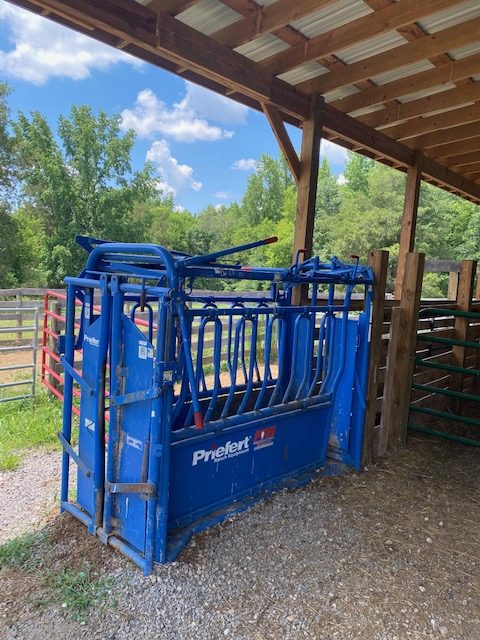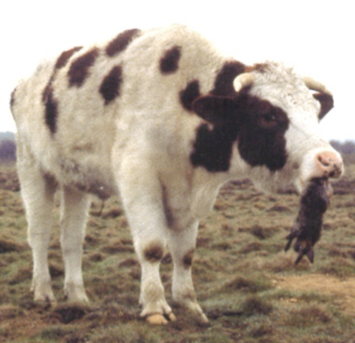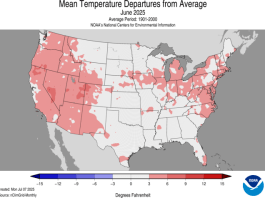
Over the past few months I’ve written several articles about why I made the switch from a cow calf operation to stockers and backgrounding. I’ve been able to improve my pastures, stop making hay all summer, and I can even have time off. And, at least in my area, stockers provide a lot more opportunities to make a profit than cows do. Today I want to focus on the facilities needed for this kind of operation.
It is critical to have the proper facilities in place before buying any cattle. A receiving lot/corral, and well-fenced pastures, all with good water sources, will increase your chances of keeping calves healthy.
Receiving Lot/Corral
Newly purchased calves are prone to wandering around and checking out their new surroundings for at least the first couple of days after arriving at their new home, especially if they haven’t been weaned. For this reason, a receiving lot with a strong fence around it is a necessity. Woven wire or board fences are ideal for this area, but six or seven strands of high tensile or barbed wire will work if woven wire is not feasible.

A receiving lot does not need to be large. In fact, if it is too big it can allow the calves too much room to walk around. Your goal should be to get the calves to stop walking and bawling, and to start eating and drinking as soon as you can after they arrive.
My set up is a corral built onto an old barn, with a small grass holding lot beside it. The holding lot goes out to a small pasture that is about 2 acres in size. I usually unload new purchases into this holding lot. They will walk around the fence, and usually touch the electric wire pretty soon after arriving. Because the board fence provides a physical barrier behind the wire, they turn away from the wire instead of attempting to go through it.
I have feed and water troughs positioned perpendicular to the fence line so that calves will find them easily as they walk around the perimeter of the lot. I keep hay rings on gravel pads in the center of the pens. Unless it is extremely wet and muddy, this lot will hold 20-30 head fairly comfortably for one to three days. After the calves have settled down and I give them their first round of vaccines, they go out into the two acre paddock, where they are kept for a couple of weeks to observe for illness
Speaking of mud, do yourself a favor early on and find a spot that is well drained, sloped, or on top of a hill to build your corrals and facilities on. In addition, this area should be accessible to trucks and trailers in all weather conditions if possible. Trying to start calves in an area that is knee deep in mud is stressful on the cattle and hard on the handlers.
Working Facilities

My corral consists of two long rectangular pens outside, and a long alleyway under a lean to off the barn, with a working chute separating the alley way from the middle pen. I have gates in the alley way that I can shut to make additional sorting pens, and to make crowding into the chute easier. I like narrow long pens more than big square ones. It makes gathering and sorting much easier and allows one skilled handler to work the cattle because they don’t have room to run around the handler or bunch up and go in a circle.
A working facility does not need to be fancy or expensive to work. In fact, some of the poorest functioning facilities I have ever seen have been some of the most expensive and elaborate. If you are starting from scratch, do some research, look at facilities other people have built, and make notes of what works and what doesn’t. If you own a piece of land or have a long term lease, go ahead and invest in building a permanent, well designed facility, no matter what kind of livestock you plan to have. For a property that you may not be on long term, a set of portable panels can be used and then taken with you if you leave. Used materials, such as highway guardrail, oilfield pipe, telephone poles, railroad ties and many others can be used. These are typically very affordable and will last a long time.

Squeeze Chute

You will need a way to restrain calves in order to vaccinate, tag, deworm, castrate, and doctor. If you are going to handle more than 15 or 20 head of cattle on a regular basis, I think a squeeze chute is a worthwhile investment. It offers much more access to all parts of the animal and makes handling much safer for man and beast. A good quality squeeze chute can be purchased new for $3000-$6000, depending on the brand. It should last at least 20 years if taken care of.
If that sounds like a lot of money, consider what a trip to the emergency room costs, even with good insurance. I know several people who have hurt themselves badly enough to need to go to the ER when castrating bulls without adequate restraint. A squeeze chute may not eliminate these risks entirely, but it does significantly reduce them. Handling facilities are a worthwhile investment for any livestock operation, and the more you plan to use them the more you can afford to spend on them.
Electric Fence Training is Critical

I have heard many people say that an entire farm needs to be fenced with woven wire to contain stocker calves. This may be true if you plan to just dump them off the trailer right after buying and give them access to the whole farm. However, if you train them to an electric wire and keep them in a good holding lot until they are weaned, electric fencing works well for stockers and allows for easier pasture subdivision.
I prefer at least four strands of high tensile wire for perimeter fences. For permanent interior fencing, I like at least two strands of wire. I have had calves jump over or go under just one strand of wire. One strand of polywire is adequate for temporary fencing in situations such as strip grazing when the cattle are being moved frequently.

Water
A receiving lot should have piped water to at least one water trough that can be cleaned in between groups of calves. It is helpful to have a water trough in a corral so that animals can get a drink if they are being worked on a hot day, or if you need to keep them shut up overnight. Ideally, water sources in pastures should be located as close to the center of the pasture as possible, so that cattle will graze more evenly around it. Always ask the question, “where are the animals going to get a drink?” when evaluating a site for a holding lot, corral, or pasture.

Take a Close Look at What You’ve Got
Many existing facilities can be used to handle stocker cattle, either as they are or with some light modification. Sometimes starting over from scratch is the best option. In any case, do some research and find out what you need, make a plan, and go from there. Don’t be afraid to ask experienced producers for help in designing a facility. Investing in facilities, fencing and water infrastructure upfront will provide a big pay off for many years to come.



